 Open Access
Open Access
ARTICLE
Improved Hybrid Swarm Intelligence for Optimizing the Energy in WSN
1 Department of Computer Engineering, Lebanese French University, Erbil, 44001, Iraq
2 B LIFE Inc., Suwon, 16463, Korea
3 Department of ICT Convergence, Soonchunhyang University, Asan, 31538, Korea
4 Department of Mathematics, Faculty of Science, Mansoura University, Mansoura, 35516, Egypt
5 Department of Computational Mathematics, Science, and Engineering (CMSE), Michigan State University, East Lansing, MI, 48824, USA
* Corresponding Author: Yunyoung Nam. Email:
Computer Systems Science and Engineering 2023, 46(2), 2527-2542. https://doi.org/10.32604/csse.2023.036106
Received 17 September 2022; Accepted 22 December 2022; Issue published 09 February 2023
Abstract
In this current century, most industries are moving towards automation, where human intervention is dramatically reduced. This revolution leads to industrial revolution 4.0, which uses the Internet of Things (IoT) and wireless sensor networks (WSN). With its associated applications, this IoT device is used to compute the received WSN data from devices and transfer it to remote locations for assistance. In general, WSNs, the gateways are a long distance from the base station (BS) and are communicated through the gateways nearer to the BS. At the gateway, which is closer to the BS, energy drains faster because of the heavy load, which leads to energy issues around the BS. Since the sensors are battery-operated, either replacement or recharging of those sensor node batteries is not possible after it is deployed to their corresponding areas. In that situation, energy plays a vital role in sensor survival. Concerning reducing the network energy consumption and increasing the network lifetime, this paper proposed an efficient cluster head selection using Improved Social spider Optimization with a Rough Set (ISSRS) and routing path selection to reduce the network load using the Improved Grey wolf optimization (IGWO) approach. (i) Using ISSRS, the initial clusters are formed with the local nodes, and the cluster head is chosen. (ii) Load balancing through routing path selection using IGWO. The simulation results prove that the proposed optimization-based approaches efficiently reduce the energy through load balancing compared to existing systems in terms of energy efficiency, packet delivery ratio, network throughput, and packet loss percentage.Keywords
Wireless Sensors Network (WSN) is a collection of network devices installed in the sensing environment [1]. WSN was widely used in monitoring environments, health care, surveillance, disaster monitoring, and so on [2]. In the network, the individual devices are termed sensor nodes (SN) [3]. These sensor nodes can collect the information from the environment and transfer it into the base station (BS) directly or through intermediate gateways via wireless transmission. The transmission from the SN directly to BS causes an overhead of communication. The sensor nodes are combined as various cluster groups. One among the cluster nodes acts as a head and represents the terminal between SN and BS. This superior node is termed a cluster head (CH). The sensed data is collected from SN within its cluster and transmitted into BS. This kind of WSN is termed a cluster-based WSN.
To improve network performances, WSN has been widely used in various domains [4,5]. The primary reasons behind using sensors in the environment are their easy configuration and management setup [6]. These sensor nodes are autonomously operated and compute their network infrastructure ad hoc. In this kind of scenario, the nodes are unstable and can connect to their neighbor based on certain factors for data transmission. The CH combines the sensed data and relays it to the BS. CH can efficiently construct its single-hop and multi-hop path toward BS. The end user can use the centralized base station through the internet to retrieve the required data. During data transmission, the deployed SN can be mobile or static. The static SN is referred to as non-adaptive, and its routing mechanism is unchanged. Various mobile SN are dynamic, and their routing tables are updated when there is a change in network topology. While compared to dynamic routing, the static mechanism is secure; moreover, the stationary solutions are not appropriate for the scalable network in more significant regions [7]. The communication efficiency is increased through load balance, resource utilization, and throughput by integrating the Internet of Things (IoT) in all fields [8–10]. More physical devices are involved in IoT to transmit the data using the internet. The WSN helps IoT and supports observing and forwarding the data in the physical networking environment [11]. This research article proposed an effective cluster head selection and routing approach with load balancing to reduce network energy and computation. The significant contribution of this research is as follows:
For Each cluster, the cluster head is selected using Improved Social Spider Optimization with a Roughset model (ISSRS)
• Once the cluster head for each cluster is selected, the routing from source to destination is selected using IGWO, which is used as a load balancing approach to reduce the load of base station and gateways.
• The proposed cluster head selection and load balancing are evaluated using simulation by calculating the total number of nodes that are dead and alive. Further energy efficiency, throughput, and execution cost are calculated.
The paper is arranged as follows: Improving the energy efficiency of WSN using existing methods with load balancing and routing is discussed in Section 2. The proposed cluster head selection and routing with load balance methods are introduced in Section 3. The simulation environment with evaluation and comparative analysis of proposed vs. Existing load balancing with routing approaches is discussed in Section 4. Finally, Section 5 concludes the paper with its future extension.
The section discusses the existing literature on loading balancing, routing, and clustering in WSN-based IoT systems. Majid et al. [12] did a systematic review of WSN and IoT-based applications. The detailed discussion using WSN in industry 4.0 with its IoT-related applications, research gaps, and future research directions are discussed. Lipare et al. [13] developed GWO with a novel fitness function-based load-balancing approach to overcome the issues of energy holes in WSN. In this work, authors applied GWO for routing and cluster with enhanced fitness functions. Kumar et al. [14] developed a clustering with a Centroid-oriented routing protocol for WSN-based IoT. This routing approach has three phases: network initiation to create the zone among the nodes, selection of zone coordinator, and zone head selection. The path from the zone head to the base station is optimized and distance centric with one or dual-hop level transmission to reduce packet loss.
Qureshi et al. [15] used a gateway node to reduce the load of the cluster head and transmit the data to the base station. Their assumption that the gateway node should be in the neighbor gateway range leads to high complexity and also limits the sensor node deployment randomly. Arroyo et al. [16] developed a cloud computing and WSN-based air quality monitoring system. The distributed sensors are connected to the cloud for storage, monitoring, and processing from WSN. The data processing is performed using artificial intelligence approaches. Hornillo et al. [17] predict the shadow of satellites using WSN and IoT for smart cities. The authors developed a graphical method for predicting satellite coverage in urban areas. Their captured shadow images are similar to Eutelsat satellite measurements.
Haseeb et al. [18] proposed a secure IoT with a WSN-based innovative agriculture application. Initially, the agricultural data are sensed using the sensors, and cluster heads are formed using the multi-criteria decision method. The signal strength is measured using the Signal Noise Ratio (SNR). The simulated results prove that the proposed model enhances the network performance with increased throughput and reduced drop ratio. Butun et al. [19] reviewed the challenges and vulnerabilities of IoT and WSN-based applications. Further authors also discussed attacks related to IoT and WSN with its solutions and advantages with limitations.
Pamarthi et al. [20] did a systematic review of the WSN security issues for IoT applications. Pamarthi et al. discussed routing attacks with their security measures for ad hoc networks. Farooq et al. [21] discussed the wormhole attacks related to WSN and IoT. The authors examined the interconnection between IoT and WSN through the internet and it is guarded against external aggression. Raza et al. [22] reviewed the applications and security issues for sensor networks using the MAC protocol. The security challenges of various layers with their respective solutions were presented.
The technological security issues, with their advantages and challenges, are profoundly concerning. Kumar et al. [23] discussed IoT applications with evolutionary approaches. Sharma et al. [24] designed a relay node structure or WSN and load balancing. Here WSN created an IoT with a WSN-based application to monitor the natural disaster in the coal mine. WSN uses different parameters for network analysis, including the network’s lifetime, energy consumption, throughput, and area coverage.
Faheem et al. [25] developed an approach using bio-inspired for WSN-assisted innovative application of grid. This application developed an IoT, and WSN-assisted farming robot using a computer vision-based approach is introduced. It has been used to classify weed and non-image. The weed image data are detected through WSN, and mutual authentication protocols for WSN-based IoT scenarios are also done. This scheme has improved performance, low communication, and execution costs. The main issue is the security concern for heterogeneous IoT environments needs to be considered.
This section proposed efficient cluster head selection and routing path selection for load balancing in WSN assisted IoT environment.
The proposed system overview is shown in Fig. 1. The sensor node (SN) collects the data from the IoT sensors, such as temperature, pressure, and so on, concerning the applications. The gathered data are converted into digital form, which is transferred into the base station (BS) through cluster heads in the wireless networks. The BS consists of more power and memory. Further, it is connected to the best resources to save energy. In IoT-based applications, BS can store the data, analyze it and visualize data collected from the cluster head. BS can also provide a graphical user interface for the user to direct interaction or forward the collected data to the remotely managed server through the internet. The remoter servers send the sensed input data to the authorized user. This data is also saved on web pages to access worldwide through the internet. In this work, the clusters are formed using Euclidean distance, and the cluster head for each group is selected using the ISSRS approach. In the host computer, the load is balanced using IGWO to reduce system energy. The end users can access the centralized base station through the internet to retrieve the required data.
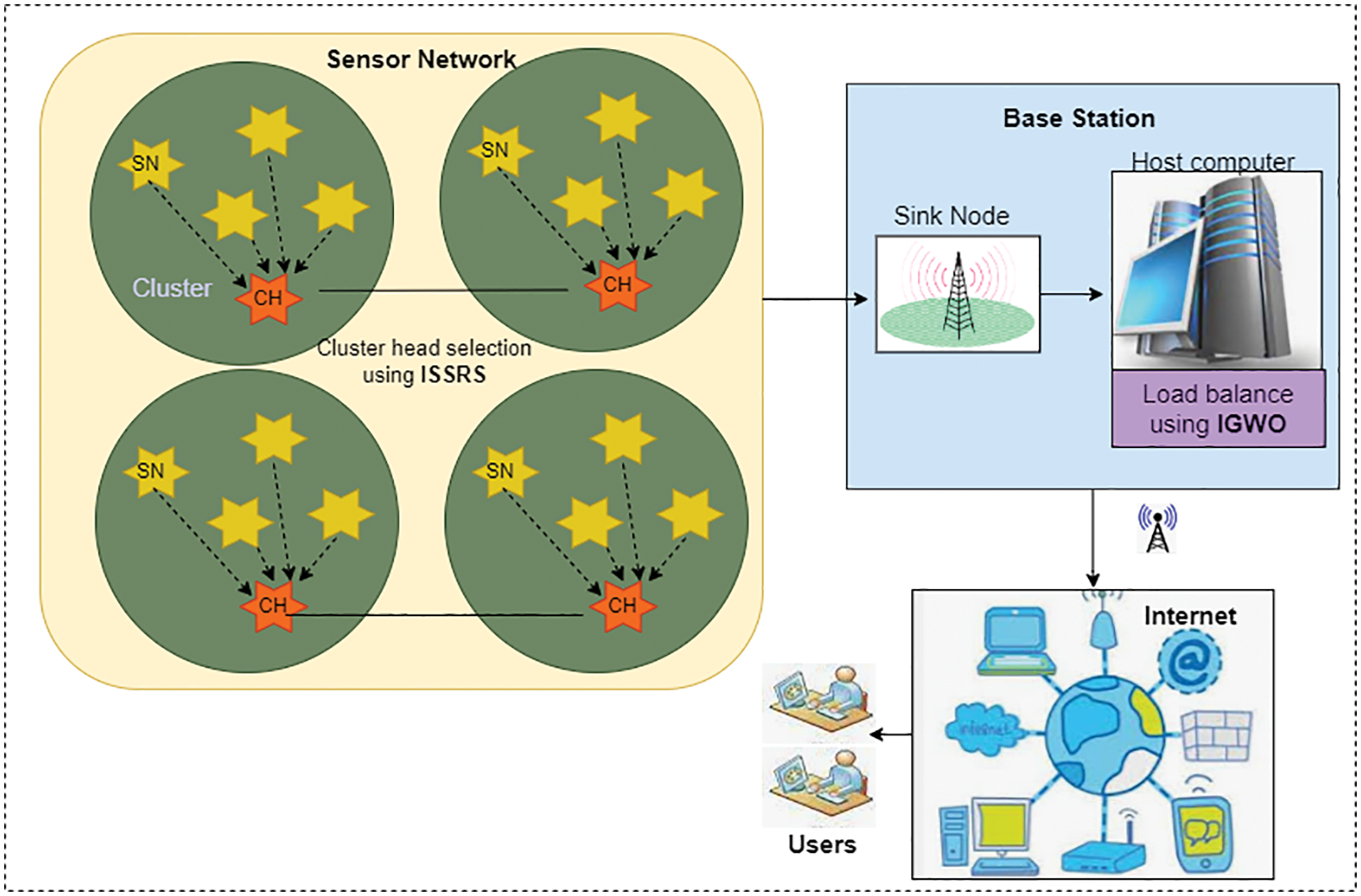
Figure 1: Architecture of proposed load balancing in WSN-assisted IoT model
Each SN is allotted its identification number. The links are formed from the source SN to the destination using Euclidean distance. It measures the distance between two adjacent SN located within the communication range CR. The sensing range SNR has been denoted as the range between the SN that can sense the signal. N is the number of nodes in the network. The set of possible communication is defined in Eq. (1)
The neighboring of SNi is declared as in Eq. (2)
The link between the SN is limited to its capacity called
where between
3.3 Cluster Head Selection Using ISSRS
Various researchers have proposed cluster-based concepts to simplify network management. The cluster head node can able to manage the sensor node. It is responsible for arranging the SN within the cluster from the routing table. Also, the cluster head gathers the data and aggregates and retransfers the collected data to the collections. These cluster heads lack energy due to the unexpected load assigned to them. To minimize the energy in CH, the distance between CH and the base station should be minimum, or else there is a need for multihop transfer from CH to the base station through intermediate cluster heads. The previous cluster method selects the cluster head node randomly without considering the parameters related to the centralized approach. This will affect the network’s scalability. The proposed meta-heuristic-based load balancing and cluster head selection approach efficiently chose the CH to transmit the data to neighbor CH based on the parameters such as Initial energy, Residual energy, Energy consumption rate, and Average network energy. The significant parameter in choosing the CH is the initial energy. Residual energy means after the series of execution, and the CH considers the remaining SN energy. The energy consumption rate is the primary factor for each cluster. The average energy of the network is the reference energy, and it is the ideal energy to make the network alive. This starts with the random initialization of the spider population. Each individual is converted into the binary vector of length N using Eq. (4)
where,
where, E is the set of conditions and D is the selected nodes, P (D) is the positive region which consists of all the nodes N that is classified based on the information C. The fitness function is declared as in Eq. (7)
where,
where, F–fitness of ith spider, worst–worst fitness value of population N and best is the best fitness value of population N. In social spider the information exchange between the spiders is represented by vibration of ith spider perceived from jth spider is represented in Eq. (9)
where, w–jth spider weight, d-distance measured between I and jth spider. There are three categories of Vibration is produced by the spider, such as n, b, and f. where vbn is the vibration produced by the nearest spider, vbf is the vibration produced by the female spider, and vbb is the vibration produced by the male spider as the best spider. The new position of Female Spider Position (FSP) is updated using Eq. (10), which is managed by the probability factor P, and the moving factor is updated with the relation between other spider and their respective vibration in the search space.
where,

Figure 2: Workflow of ISSRS
3.4 Routing Using IGWO for Load Balancing and Energy Saving
Once the cluster head has been selected using ISSRS, load balancing is the next consideration through the proper routing mechanism. Since the CH is nearer the base station, it can directly transmit the sensed data to BS. In the case of CH far from the BS, it can choose multi-hop transmission using routing methods to select the efficient path to the next CH for information transfer. Assume the sensor node (SN) and the deployed gateways in the region with the area of X * X m2. Within the communication range, the SNi can connect only one Cluster head CHi. Let kij be the Boolean variable defined in Eq. (12). Each CH should secure to BS directly or through another CH via gateways. The load Li is reduced for the CH and balanced with other CH.
The Improved Grey wolf optimization (IGWO) based routing scheme consists of three phases such as (i) Wolves initialization (ii) For each wolf fitness value is computed and (iii) Velocity and Wolves position updating.
(i) Wolves Initialization: Each solution is stated as a map from one CH to other CH/BS. The solution size is similar to the number of CH called ‘H’. The solution represents the route from a CH towards BS via next consecutive CH in network. Each CH is stated with the random number
(ii) Fitness Value Computation: The fitness function is the important factor that measure the quality of the result based on the parameters. This phase helps to update the parameters such as
where, h-number of CH. The total hops from CH in the network is defined in Eq. (15)
Routing is performed with the consideration of minimum distance traveled with less number of hops. Hence, the smaller the space, the Hops traversed leads high fitness value for obtaining the best solution. Therefore, the fitness value is inversely proportional to the number of hops and distance. The highest fitness values lead to the best solution. The Routing fitness (RF) function is represented in Eq. (16)
where,
(iii) Velocity and Position Updation: Each wolf of
This efficient routing approach reduces the energy of the system.

Figure 3: Proposed IGWO based routing
Fig. 4 represents the Cluster head-based load balancing approach using the proposed ISSRS-IGWO mechanism. Initially, CH1 senses the data from five SN. Rather, CH3 senses data from three SN. CH1 has an over workload, and it is balanced with CH3. As well as, CH2 consists of four SN, and CH4 consists of two SN. The load of CH2 is balanced with CH4. This efficient load balancing reduces the computational overhead of the network.
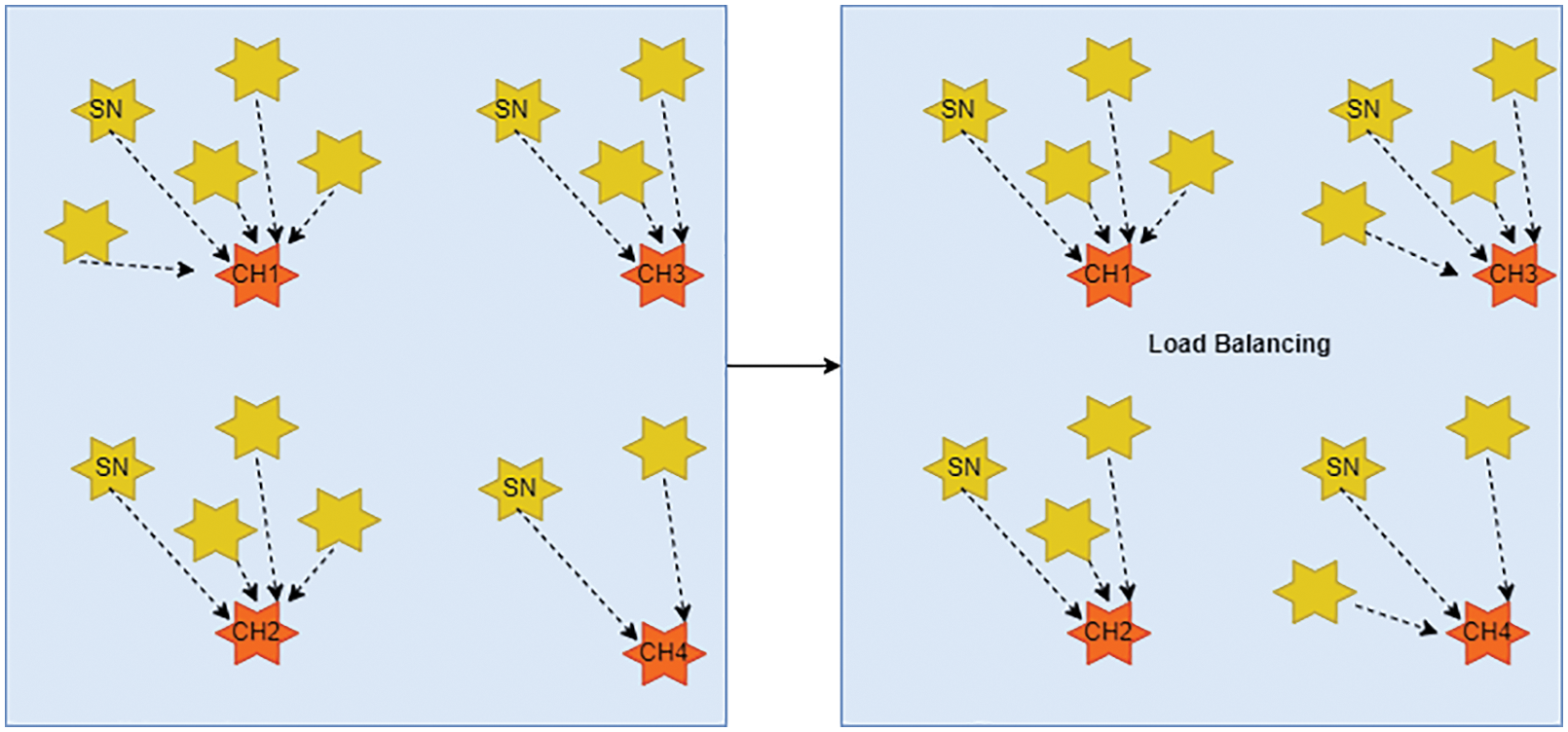
Figure 4: Load balancing of CH using proposed ISSRS-IGWO
In order to transmit one bit of data over the distance d, the energy is computed as in Eq. (24)
where,
4 Simulation Results and Discussions
The proposed system model performance is compared with standard Grey wolf optimization, Multi-objective fuzzy clustering algorithm (MOFCA), and Particle Swarm Optimization (PSO)–ECHS. The evaluations regarding the number of dead and alive nodes, load balancing, energy consumption, and packet loss are implemented using Python Scikit learn.
MOFCA approach is made by using both clustering and routing for multi-hop transmission. The proposed approach uses two methods for its efficient routing mechanism. The cluster head selection is based on ISSRS, and the routing is based on IGWO. PSO used only one best possible solution. At the same time, the proposed model used three possible explanations. The routing fitness value comparison of IGWO and other approaches is shown in Table 2 for equal and unequal numbers of nodes. From Table 1 the proposed ISSRS-IGWO secured improved routing fitness values compared to different methods for the equal and unequal load. Increasing the fitness values gives a better solution.


Evaluation of the number of alive nodes during the transmission is shown in Fig. 5 for the number of rounds. From the illustration, it has been observed that the proposed model secured longer network life than other approaches. For 3000 matches, using the proposed ISSRS-IGWO model, 850 nodes are alive for transmission. At the same time, in the different approaches, such as GWO, MOFCA, and PSO-ECHS, the number of active nodes is 630, 580, and 610, respectively. Hence, the proposed model increases the network lifespan while transmitting the data.

Figure 5: Number of alive nodes for proposed ISSRS-IGWO vs. existing approaches
Fig. 6 displays the evaluation in terms of the number of dead nodes. It can be seen from the illustration that the proposed model secured fewer dead nodes than other methods. For 3000 rounds, 330 nodes died during the transmission while using the proposed ISSRS-IGWO model. Unlike the different approaches, such as GWO and MOFCA, the number of dead nodes is 410 500, and for PSO-ECHS, all 500 nodes have died in 2500 rounds. This result reveals that the proposed algorithm optimizes the energy consumption of nodes, so that cluster heads are rotating among nodes. This helps to minimize energy consumption by avoiding new nodes as cluster heads in the network. Hence, the proposed model increases the network lifespan with the reduced number of dead nodes while transmitting the data.
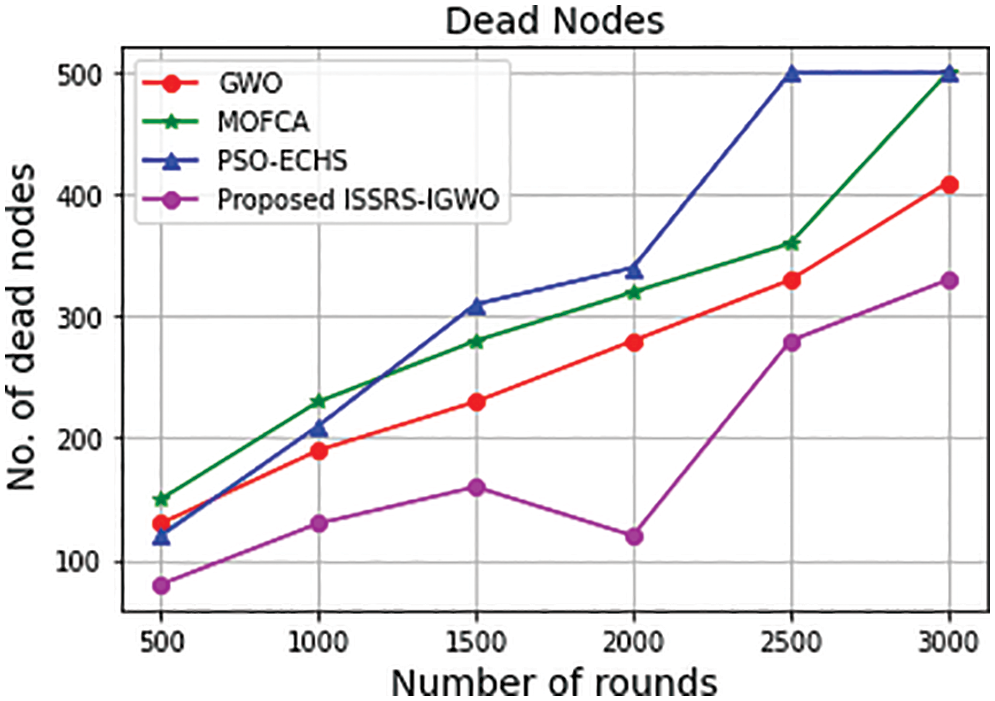
Figure 6: Number of dead nodes for ISSRS-IGWO vs. existing approaches
The number of data packets transferred from CH to BS is shown in Fig. 7. In terms of the number of rounds. This illustration shows the superior performance of the proposed model to send the sensed data from SN to BS through CH. Compared to other approaches, the efficient cluster head selection with the routing approach transmits the maximum amount of data packets to BS via CH.
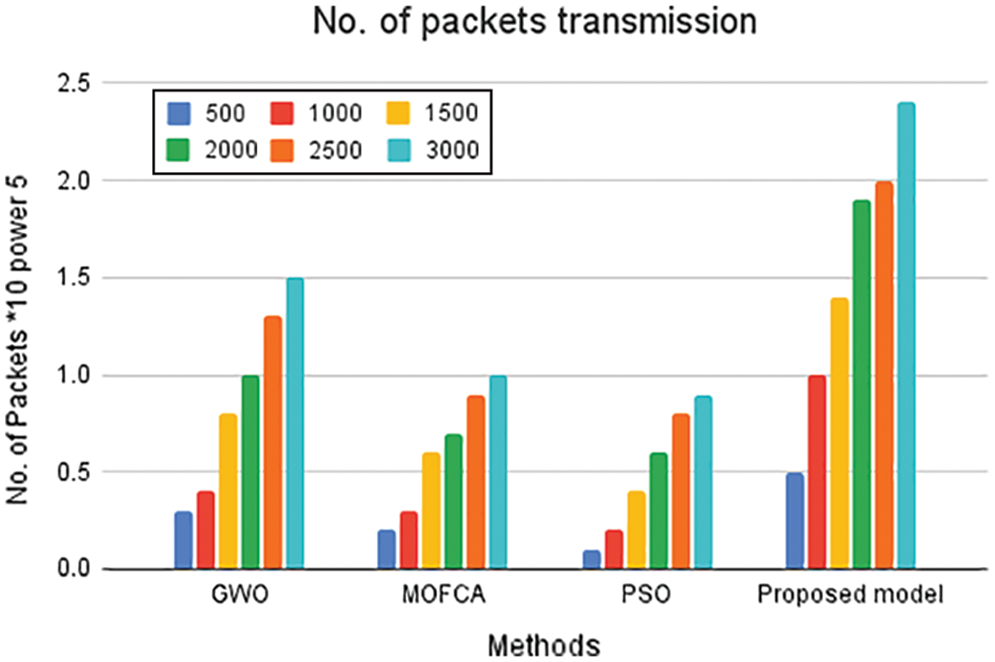
Figure 7: Number of packets transmission of ISSRS-IGWO vs. existing approaches
Fig. 8 compares existing and proposed load-balancing approaches in terms of throughput. Throughput is measured as the size of the number of packets delivered, and it is measured using Eq. (26). Compared to the traditional approaches, the proposed model secured increased throughput and returned the packages without loss. The increased throughput of the proposed model is due to the implementation of robust cluster head selection.
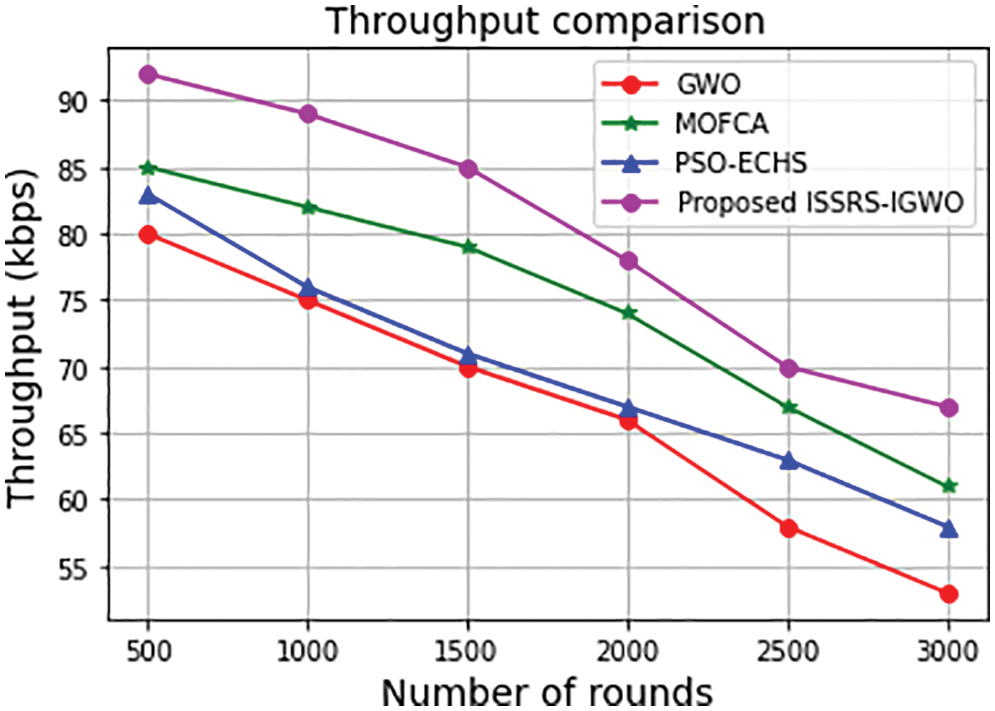
Figure 8: Throughput comparison of existing and ISSRS-IGWO models
Packet loss is computed to assess the dependability of the suggested communication line. Compared to the total number of packets detected by SN in the network, the packet loss (PL) % is similar to the not received packet by the BS. PL occurs because of the SN failure, which has the data over the sensing network area. The PL computation is shown in Eq. (28). The evaluation of the proposed model in terms of PL is demonstrated in Fig. 9. Compared to the existing approaches, the proposed model secured less PL percentage at the simulation time of 200 s. The PL for the proposed model is 2.2%, whereas the other approaches, such as GWO, MOFCA, and PSO, 21.1%, 36%, and 40.6%, respectively.
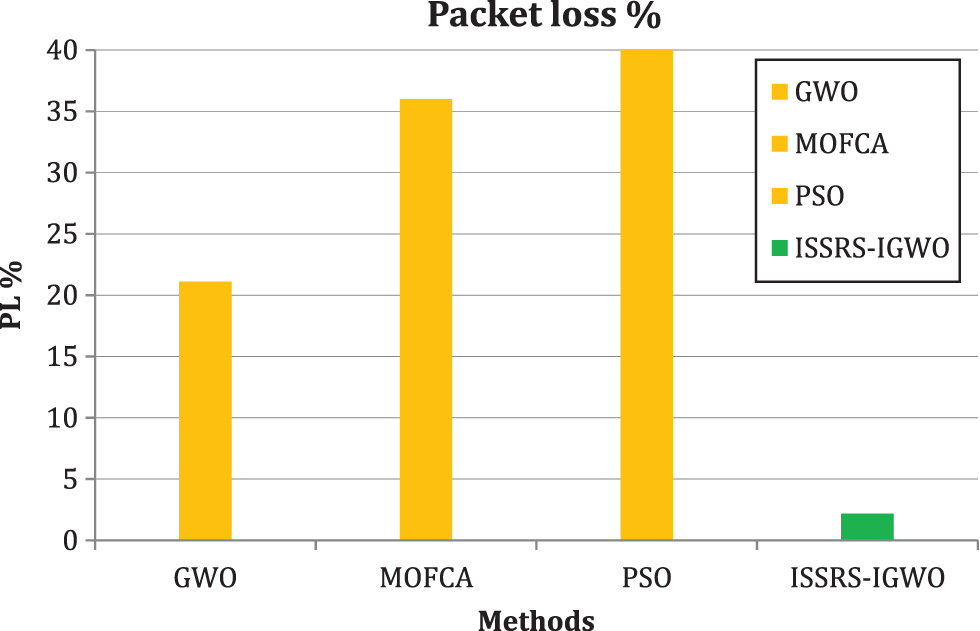
Figure 9: PL (%) comparison of ISSRS-IGWO vs. existing models for 200 s simulation
The energy efficiency of the proposed model is evaluated, and it is compared with the existing approaches. The energy computation evaluation is performed on an equal and unequal number of SN for 100, 300, and 500 nodes. From Table 1, the proposed ISSRS-IGWO consumes less energy than another meta-heuristic approaches-based load balancing. The proposed model reduces the load of SN through CH, which distributes the load to other clusters equally. The proposed routing approach chose the best path with a minimum distance from the SN to BS through CH, which will reduce the energy with the minimum distance transmission. This evaluation ensures that the proposed model consumes minimum power compared to the other approaches and increases the network lifetime.
Fig. 10 represents the comparative analysis of proposed and existing approaches regarding execution cost. For 500 nodes, the proposed model secured 35 s for its execution. At the same time, the other methods, such as GWO, MOFCA, and PSO-ECHS, obtained the 80, 95, and 90 s, respectively. For this reason, the proposed ISSRS-IGWO is superior to other approaches with a minimum execution cost. Hence, the simulated evaluation and its comparative analysis show that the proposed model is efficient in reducing the energy and computation cost of the WSN.
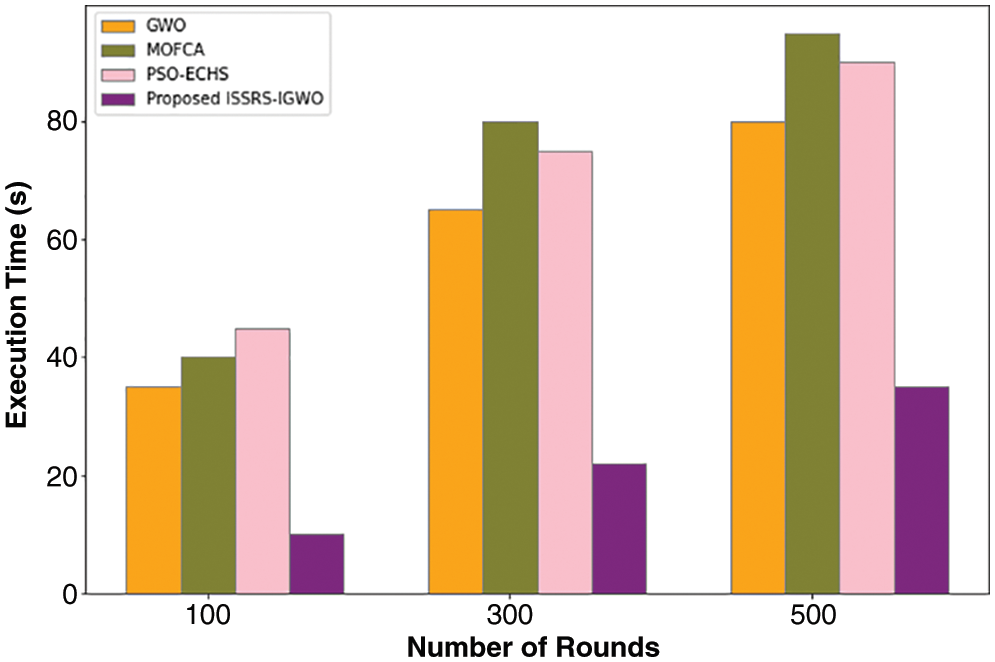
Figure 10: Execution time comparison
This paper proposes an efficient cluster head selection and load-balancing approach using Swarm Intelligence for a WSN-assisted IoT environment. Initially, the cluster of sensor nodes is formed using the Euclidean distance between the neighbor nodes in the communication range. Using the proposed Improved social spider optimization with a rough set approach, the CH is selected for each cluster, representing the manager for each group. The data from the sensor nodes are forwarded to the base station through cluster heads. The set heads nearer to the base station are sent the sensed data directly. Instead, the clusters far from the base station drain their energy and need extra computation costs to send the data. To reduce the system energy, load, and computation cost, another swarm approach called improved grey wolf optimization had been proposed for efficient routing from SN to BS via CH. The proposed cluster head selection and load balancing were evaluated in the simulation environment regarding the number of dead and alive nodes, energy efficiency, throughput, packet loss, and execution cost. These simulation results are compared with the existing approaches. The results prove the efficiency of the proposed model with reduced energy and execution costs, which will improve the network lifetime. The sensor node mobility is not considered in this work which is regarded as the limitation. In the future, sensor nodes’ mobility, cluster head, and base station can be assumed to determine the location change and provides efficient routing with reduced load and energy.
Funding Statement: This work was supported by the Collabo R&D between Industry, Academy, and Research Institute (S3250534) funded by the Ministry of SMEs and Startups (MSS, Korea), and the Soonchunhyang University Research Fund.
Conflicts of Interest: The authors declare that they have no conflicts of interest to report regarding the present study.
References
1. J. Li, L. L. Andrew, C. H. Foh, M. Zukerman and H. H. Chen, “Connectivity coverage and placement in wireless sensor networks,” Sensors, vol. 9, no. 10, pp. 7664–7693, 2009. [Google Scholar]
2. P. Kuila and P. K. Jana, “Improved load balanced clustering algorithm for wireless sensor networks,” in Proc. Int. Conf. on Advanced Computing, Networking and Security, Surathkal, India, pp. 399–404, 2011. [Google Scholar]
3. J. Tang, B. Hao and A. Sen, “Relay node placement in large scale wireless sensor networks,” Computer Communications, vol. 29, no. 4, pp. 490–501, 2006. [Google Scholar]
4. P. S. Mehra, M. N. Doja and B. Alam, “Fuzzy based enhanced cluster head selection (FBECS) for WSN,” Journal of King Saud University Science, vol. 32, no. 1, pp. 390–401, 2020. [Google Scholar]
5. A. Tripathi, H. P. Gupta, T. Dutta, R. Mishra, K. K. Shukla et al., “Coverage and connectivity in WSNs: A survey, research issues and challenges,” IEEE Access, vol. 6, no. 22, pp. 26971–26992, 2018. [Google Scholar]
6. K. A. Awan, I. U. Din, A. Almogren, M. Guizani and S. Khan, “StabTrust–-A stable and centralized trustbased clustering mechanism for IoT enabled vehicular ad-hoc networks,” IEEE Access, vol. 8, no. 4, pp. 21159–21177, 2020. [Google Scholar]
7. A. Abuarqoub, M. Hammoudeh, B. Adebisi, S. Jabbar, A. Bounceur et al., “Dynamic clustering and management of mobile wireless sensor networks,” Computer Networks, vol. 117, no. 11, pp. 62–75, 2017. [Google Scholar]
8. H. A. Khattak, Z. Ameer, U. I. Din and M. K. Khan, “Cross-layer design and optimization techniques in wireless multimedia sensor networks for smart cities,” Computer Science and Information Systems, vol. 16, no. 1, pp. 1–17, 2019. [Google Scholar]
9. I. U. Din, M. Guizani, S. Hassan, B. S. Kim, M. K. Khan et al., “The internet of things: A review of enabled technologies and future challenges,” IEEE Access, vol. 7, no. 4, pp. 7606–7640, 2018. [Google Scholar]
10. K. A. Awan, I. U. Din, A. Almogren, M. Guizani, A. Altameem et al., “Robust trust pro-privacy robust distributed trust management mechanism for internet of things,” IEEE Access, vol. 7, no. 9, pp. 62095–62106, 2019. [Google Scholar]
11. I. U. Din, M. Guizani, J. J. Rodrigues, S. Hassan and V. V. Korotaev, “Machine learning in the internet of things: Designed techniques for smart cities,” Future Generation Computer Systems, vol. 100, no. 5, pp. 826–843, 2019. [Google Scholar]
12. M. Majid, S. Habib, A. R. Javed, M. Rizwan, G. Srivastava et al., “Applications of wireless sensor networks and internet of things frameworks in the industry revolution 4.0: A systematic literature review,” Sensors, vol. 22, no. 6, pp. 2087, 2022. [Google Scholar]
13. A. Lipare, D. R. Edla and V. Kuppil, “Energy efficient load balancing approach for avoiding energy hole problem in WSN using grey wolf optimizer with novel fitness function,” Applied Soft Computing, vol. 84, no. 3, pp. 105706, 2019. [Google Scholar]
14. N. P. R. Kumar and J. B. Gnanadhas, “Cluster centroid based energy efficient routing protocol for WSN assisted IoT,” Advances in Science, Technology and Engineering Systems Journal, vol. 5, no. 4, pp. 296–313, 2020. [Google Scholar]
15. K. N. Qureshi, M. U. Bashir, J. Lloret and A. Le, “Optimized clusterbased dynamic energyaware routing protocol for wireless sensor networks in agriculture precision,” Journal of Sensors, vol. 2020, no. 4, pp. 1–19, 2020. [Google Scholar]
16. P. Arroyo, J. L. Herrero, J. L. Suárez and J. Loza, “Wireless sensor network combined with cloud computing for air quality monitoring,” Sensors, vol. 19, no. 3, pp. 25–45, 2019. [Google Scholar]
17. S. Hornillo, R. Martín and V. Baena, “Prediction of satellite shadowing in smart cities with application to IoT,” Sensors, vol. 20, no. 2, pp. 475–487, 2020. [Google Scholar]
18. K. Haseeb, I. Ud Din, A. Almogren and N. Islam, “An energy efficient and secure IoT-based WSN framework: An application to smart agriculture,” Sensors, vol. 20, no. 7, pp. 2081–2095, 2020. [Google Scholar]
19. I. Butun, P. Österberg and H. So, “Security of the internet of things: Vulnerabilities, attacks, and countermeasures,” IEEE Communications Surveys & Tutorials, vol. 22, no. 1, pp. 616–644, 2019. [Google Scholar]
20. S. Pamarthi and R. Narmadha, “Literature review on network security in wireless mobile ad-hoc network for IoT applications: Network attacks and detection mechanisms,” International Journal of Intelligent Unmanned Systems, vol. 6, no. 2, pp. 1–22, 2021. [Google Scholar]
21. M. U. Farooq, M. Waseem, S. Mazhar, A. Khairi and T. Kamal, “A review on internet of things (IoT),” International Journal of Computer Applications, vol. 113, no. 1, pp. 1–7, 2015. [Google Scholar]
22. S. Raza, M. Faheem and M. Guenes, “Industrial wireless sensor and actuator networks in industry 4.0: Exploring requirements, protocols, and challenges—A MAC survey,” International Journal of Communication Systems, vol. 32, no. 15, pp. e4074, 2019. [Google Scholar]
23. S. Kumar, P. Tiwari and M. Zymbler, “Internet of things is a revolutionary approach for future technology enhancement: A review,” Journal of Big Data, vol. 6, no. 1, pp. 1–21, 2019. [Google Scholar]
24. R. Sharma and S. Prakash, “Enhancement of relay nodes communication approach in WSN IoT for underground coal mine,” Journal of Information and Optimization Sciences, vol. 41, no. 2, pp. 521–531, 2020. [Google Scholar]
25. M. Faheem, R. A. Butt, B. Raza, M. W. Ashraf and S. Begum, “Bio-inspired routing protocol for WSN based smart grid applications in the context of industry 4.0,” Transactions on Emerging Telecommunications Technologies, vol. 30, no. 8, pp. e3503, 2019. [Google Scholar]
Cite This Article
 Copyright © 2023 The Author(s). Published by Tech Science Press.
Copyright © 2023 The Author(s). Published by Tech Science Press.This work is licensed under a Creative Commons Attribution 4.0 International License , which permits unrestricted use, distribution, and reproduction in any medium, provided the original work is properly cited.


 Submit a Paper
Submit a Paper Propose a Special lssue
Propose a Special lssue View Full Text
View Full Text Download PDF
Download PDF Downloads
Downloads
 Citation Tools
Citation Tools